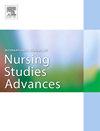Breastfeeding trajectory of mothers of preterm infants within 6 months postpartum: A longitudinal study
IF 3.1
Q1 NURSING
International Journal of Nursing Studies Advances
Pub Date : 2025-02-11
DOI:10.1016/j.ijnsa.2025.100311
引用次数: 0
Abstract
Background
Breast milk is the nutrient of choice for preterm infants. The World Health Organization has set a target of ensuring by 2030 that 70 % of infants younger than age 6 months are exclusively breastfed. The breastfeeding status of mothers of preterm infants is far below that target. Preterm infants are a special group, and there are many difficulties in and obstacles to adhering to breastfeeding. It is urgent to understand the current situation of breastfeeding among mothers of preterm infants, the change in their breastfeeding behaviors over time, and factors influencing breastfeeding in this population during different postpartum stages.
Objective
We aimed to explore potential breastfeeding behavior trajectories and analyze modifiable influencing factors to provide a reference for health care staff to identify risk groups of breastfeeding attrition at an early stage and develop targeted intervention measures.
Methods
We conducted a prospective, single-center, longitudinal study involving a cohort of mothers of preterm infants from July 2023 to May 2024. We administered the Breastfeeding Behavior Questionnaire, Breastfeeding Intention Questionnaire, Breastfeeding Prediction Scale, Breastfeeding Knowledge Questionnaire, and Edinburgh Postnatal Depression Scale. Data were collected at four timepoints: before discharge (T0) and at 6 weeks (T1), 4 months (T2), and 6 months postpartum (T3). A mixed model of latent variable growth was used to fit the trajectory of maternal breastfeeding behavior, and multiple logistic regression analysis was used to detect factors influencing the trajectory of breastfeeding behavior.
Results
Three types of heterogeneity tracks were found: a "high-level rising" group (36.5 %), "medium-level declining" group (26.0 %), and "low-level declining" group (37.5 %). Household income, spouse's educational background, smoking in the spouse, breastfeeding patterns before discharge (T0), perceived breastfeeding control and breastfeeding intention (T1), perceived breastfeeding control, breastfeeding intention, and breastfeeding knowledge (T2), and perceived breastfeeding control, breastfeeding positive attitude, and breastfeeding negative attitude (T3) were predictors of different profiles.
Conclusion
Breastfeeding is of great importance to promote the growth and development of preterm infants. However, the breastfeeding situation among mothers of preterm infants 6 months after delivery is not encouraging. The rate of exclusive breastfeeding is low and needs to be improved. Clarifying those variables related to the Theory of Planned Behavior, such as breastfeeding positive and negative attitudes, perceived breastfeeding control, breastfeeding knowledge, and postpartum depression score, can provide a theoretical basis for the early identification and screening of mothers at risk of exclusive breastfeeding attrition. Interventions should be delivered at scale to benefit all new mothers and infants.
求助全文
约1分钟内获得全文
求助全文
来源期刊

International Journal of Nursing Studies Advances
Nursing-General Nursing
CiteScore
5.80
自引率
0.00%
发文量
45
审稿时长
81 days
 求助内容:
求助内容: 应助结果提醒方式:
应助结果提醒方式:


